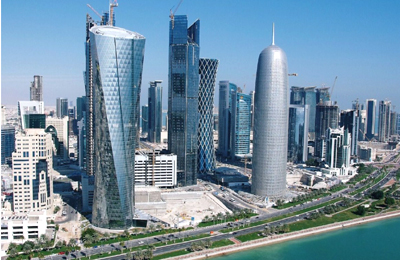
Qatar GDP growth ‘may slow down’
Kuwait, August 12, 2012
After posting double-digit growth in 2011 for the sixth consecutive year on the back of near-maximal liquefied natural gas (LNG) and elevated oil prices, Qatar’s output growth is set to moderate over the next few years, a report said.
Real GDP growth is forecast to slow to 6.5 per cent and 4.1 per cent in 2012 and 2013, respectively, said the latest GCC Brief issued by the National Bank of Kuwait (NBK).
Despite declining oil output from maturing fields this year, Qatar’s economy should benefit from its first full year of maximum LNG output (77 million tonnes) and increased production of liquid fuels from the Pearl GTL (gas-to-liquids) facility, which raised its capacity to 140,000 barrels per day and sold its first cargo of gasoil in 2011, said the report.
Barring an early reappraisal of the moratorium on new hydrocarbon projects from the North Field, economic growth drivers will increasingly originate from the non-oil sector.
According to the GCC Brief, production of petrochemicals and other downstream gas and oil derivatives, manufacturing of metals, construction and financial services are expected to accelerate over the next few years.
Much of non-oil growth is contingent on government spending. In this regard, the authorities intend to spend more than $100 billion on an ambitious pipeline of mega-projects in line with the National Development Strategy 2011-2016 and ahead of the World Cup 2022.
These include a new railway network, airport, port, city (Lusail) and World Cup stadia. Moreover, in a bid to raise project financing, the government and private sector have tapped the bond markets; $37.5 billion worth of bonds was outstanding by the end of 2011 including a $5 billion three-tranche heavily oversubscribed Eurobond issued last November, the report said.
Qatar’s consumer price index (CPI) rebounded in 2011 after two consecutive years of deflation, rising to an annual average of 1.9 per cent. This year, however, inflation has retreated to 1.1 per cent y/y.
With depressed rental prices persisting, last year’s fuel hikes wearing off, global food and commodity prices down from their highs in 2011, the outlook is moderate: 1.6 per cent in 2012 and 2.0 per cent in 2013 - even in view of the accommodative fiscal and monetary environment.
Qatar’s fiscal surpluses are expected two narrow in 2012 and further in 2013, to 5.0 per cent and 2.9 per cent of GDP, respectively, said the report.
This is on account of slowing hydrocarbon revenue growth - prices are forecast to decline slightly while expansion will be marginal - and rising government expenditures. These will also be a function of capital outlays (30-40 per cent of the budget over the medium-term) and elevated salary and pension costs.
The brief forecasted that Qatar’s current account surpluses, while still sizeable, will also narrow in accordance with moderating export revenue growth, from 16.3 per cent in 2012 to 14.0 per cent of GDP in 2013.
Risks to Qatar’s outlook will stem largely from international concerns: the Euro zone debt crisis, slowing Chinese and US demand as well as regional geopolitical insecurity. These may transmit to the local economy through volatile energy prices and uncertain financial and capital flows, the GCC Brief said. – TradeArabia News Service







